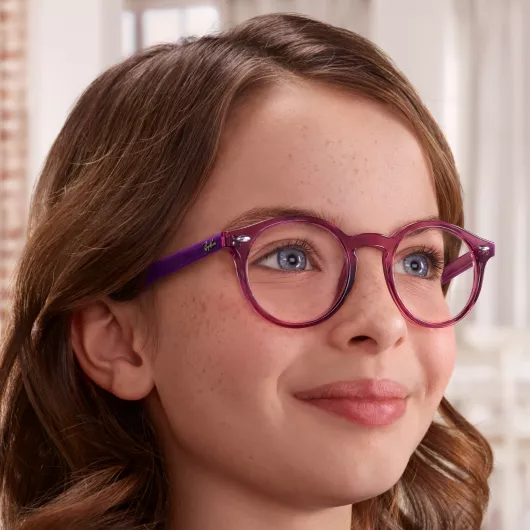Eyezen Kids
Optimised single vision lenses for 6-12 years old. Designed for how they see the world.

Standard single vision lenses only consider the prescription for the wearer’s far vision. This means that the lens is only optimised through the optical centre, and aberrations occur in the peripheral zones. These lens zones are often used by children as they frequently move their eyes rather than their head to take in the world around them.
To better understand their visual behaviour an Essilor study examined and measured the eye head coordination in 169 children aged between 6-14 years old and found that children are mainly eye movers. 77% of the children were identified as eye-movers.
This means that children will tend to look through every part of the lens instead of just the central area.
It is therefore important to provide good visual acuity on all gaze directions for children’s lenses rather than just through the centre of the lens.
The period of life between the ages of six to twenty is when vision experiences high visual demands. Children use their vision to learn about their world and as they progress in school the amount of time spent on reading and writing increases significantly, while the size of print often becomes smaller as their reading skills become more advanced.

Eyezen DualOptim Kids technology
The new Eyezen DualOptim Kids technology takes into account two reference points to optimise the surface of the lens for all children’s gaze directions (not only for the optical centre), while maintaining their prescription to give them better quality vision through a larger area of the lens.
Eyezen Kids has been designed around three main parameters to provide a lens that is truly optimised for children. These parameters are:
- Their facial morphology
- Object distances
- Gaze directions
Designed for children
A child’s facial anatomy should not be considered to be a shrunken down version of an adults’. Due to the difference in parameters such as their nose shape (smaller and closer to the eyes), Essilor R&D discovered that when fitted to a child, the lens fitting measurements will very often show a different vertex distance, pantoscopic angle, and wrap angle. A growing child is also typically shorter than an adult, giving them a lower point of view. This means that children will tend to look through the upper part of the lens to see the same thing as their parents.
Further to this, a child’s working distance is typically noticeably closer to that of an adult. These two points combined with how children move their eyes while looking through a spectacle lens mean that Eyezen Kids lenses provide exceptional quality vision for children through their design. The lens provides much improved areas of clear vision compared to a traditional single vision lens, allowing children to use the lens more naturally and comfortably.
